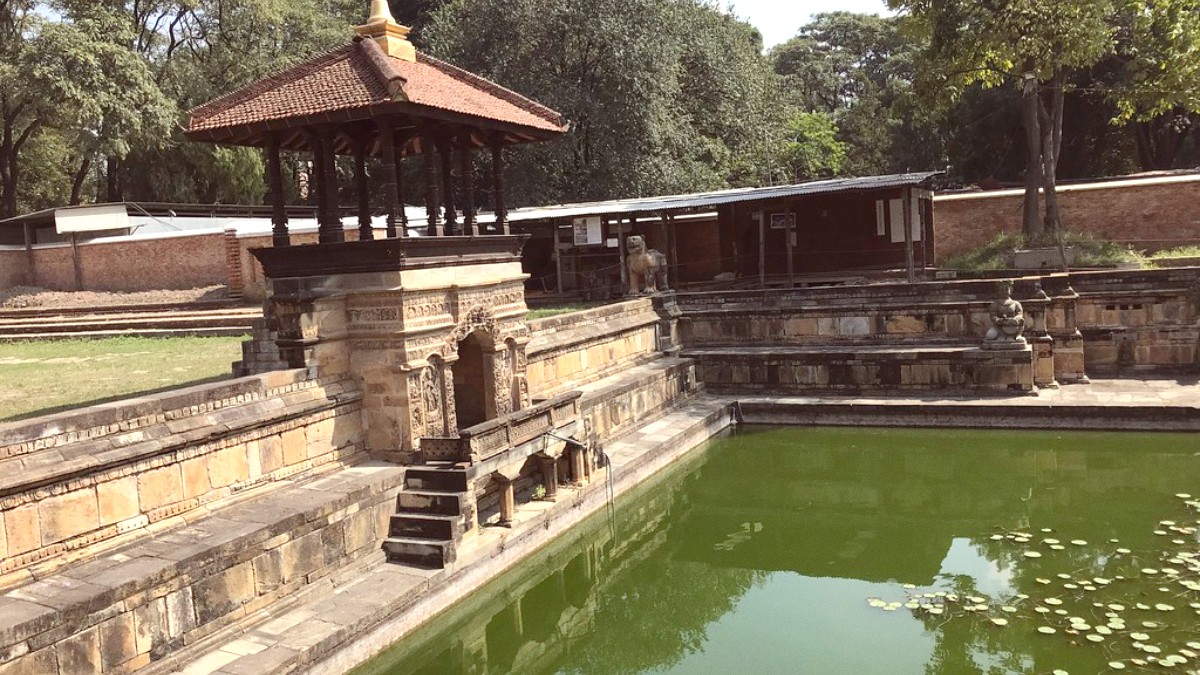
Around The Kathmandu Valley, Nepal
Newari food focuses on elaborate feasts (Bhoj) during festivals and family gatherings. It often uses a wider variety of spices and fermented ingredients. While general Nepali cuisine centers around Dhal Bhat (lentil soup and rice), Newari food incorporates many meat dishes, often buffalo, alongside various snacks and vegetable preparations.
This cuisine reflects the Newar people's rich agricultural history and their celebration of community and festivity.
Traditionally, people eat food with their right hand. When offering or receiving food or money, always use your right hand.
It is generally impolite to share food from your own plate once you have started eating. Order individual portions.
Remove your shoes before entering some traditional eateries or private homes, especially if others do so.
Patan's culinary landscape presents a range of dishes, from the everyday staple to unique Newari specialties.
The undisputed staple meal of Nepal. Steamed rice served with lentil soup (dhal), a vegetable curry (tarkari), and often a small portion of meat or pickles.
Find at any local 'bhojanalaya' or restaurant across Patan.
Tibetan-influenced dumplings filled with buffalo, chicken, or vegetables. Served steamed, pan-fried (kothey), deep-fried (fried momo), or in a spicy soup (jhol momo).
Widely available at almost all cafes, restaurants, and street food stalls.
A traditional Newari platter, often served during celebrations. Features beaten rice (chiura), spiced buffalo meat (choila), fried black gram patties (bara), pickled vegetables (achar), gundruk, and often roasted ginger and boiled eggs.
Seek out traditional Newari restaurants, especially in Patan's old city lanes.
Chiya is sweet, spiced black tea with milk, an ubiquitous beverage. Lassi is a refreshing yogurt drink, either sweet or savory.
Chhaang (Tongba), fermented millet beer, and Raksi, a distilled drink from millet or rice, are traditional. Nepali Coffee is also growing in popularity.
True fine dining establishments generally reside within luxury hotels in the broader Kathmandu Valley, like Vivanta Kathmandu (Jhamsikhel).
Abundant in Patan, specifically in areas like Pulchowk and Jhamsikhel. These establishments offer a comfortable dining experience.
For authentic and budget-friendly meals, explore the numerous small 'bhojanalaya' (local eateries) and tea stalls throughout Patan.
The Jhamsikhel area, a short taxi or ride-share from Patan Durbar Square, is notably known for its concentration of international restaurants.
Find Italian, Mexican, Japanese, Korean, Thai, Indian, and more.
These options cater to expatriates and travelers seeking familiar flavors or a break from local fare.
Restaurants here offer various global cuisines, providing ample choice for diverse palates.
The market around Patan Durbar Square, known for traditional crafts, local produce.
Smaller daily markets appear in different neighborhoods, selling fresh produce, spices.
These markets are where locals purchase fresh ingredients daily for their homes.
A bustling hub for daily needs and local commerce, supporting community life.
Halal meat is available in some specific restaurants that cater to the Muslim community, mainly in Kathmandu.
It is not widely available across all eateries in Patan.
Kosher food is generally not available in Nepal. Travelers with strict kosher dietary needs may need to bring their own provisions.
Focus on naturally kosher items like fruits and packaged goods.
Clearly communicate your allergies to restaurant staff. Learning basic Nepali phrases for your allergy ("Ma lai... Allergy cha") or carrying an allergy card in Nepali is helpful.
For severe allergies, consider focusing on naturally allergen-free items like fruits and packaged goods from reliable sources.
Several organizations and guesthouses in the Kathmandu Valley, including some in Patan, offer cooking classes. These hands-on experiences learn to prepare traditional dishes like momos, Dhal Bhat, or specific Newari specialties.
Guided food tours focusing on Newari cuisine in Patan are available. These tours typically take you through local markets and hidden eateries in the old city.
While Patan is an urban center, some farm visits or opportunities to see local food production might occur in the surrounding rural areas of the Kathmandu Valley.
Observe with respect; ask permission before taking photos.
Festivals like Dashain, Tihar, or Yomari Punhi feature specific traditional dishes and cultural significance.
Rato Machhindranath Jatra, a major chariot festival unique to Patan, occurs over several weeks in April/May.
Patan features restaurants located in beautifully restored traditional Newari homes.
These establishments offer an authentic ambiance, dining in a setting reflecting the city's architectural heritage.
Many focus on traditional Newari cuisine, providing an immersive cultural and culinary experience. Seek these spots for a memorable meal.
When trying street food, observe the vendor's hygiene and choose stalls with a high turnover of customers. This usually indicates freshness.